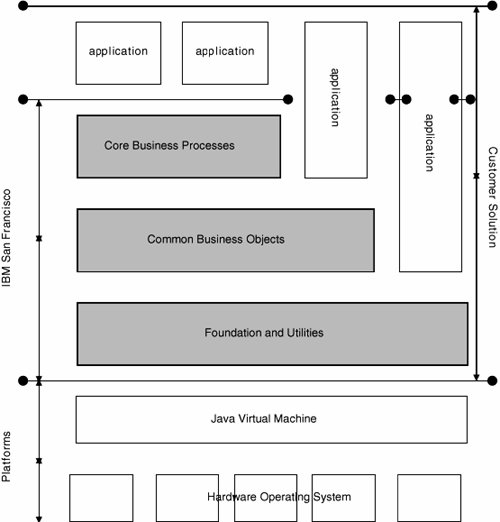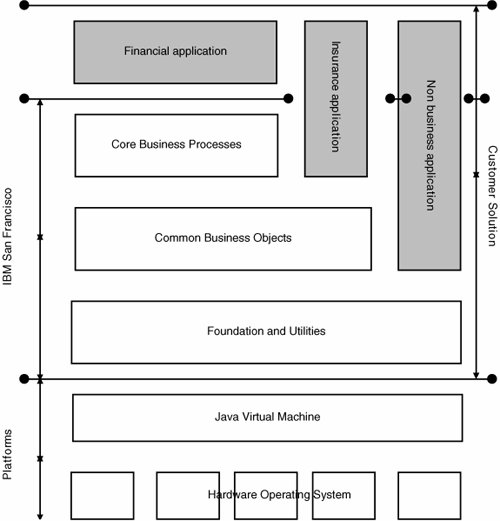Object-Oriented Analysis, Design, and Programming
| In the year 2000, as they have said at the beginning of each decade for the past 30 years, object-oriented design and analysis advocates said, "This is the decade of objects." Although we hope this will be true in this decade, we can at least say that this is certainly the century of objects. One of the authors witnessed the birth of object-oriented computing. He must confess that even though he was already a programming veteran at the time, he was not completely sure what was being delivered at this blessed event. The inventors were not sure either, but as the baby grew, it became ever stronger and more recognizable as the revolution in computer programming technology it has become today.
The genius of Simula was turning each simulated event into what we know today as an object. The events had coded methods and hidden data, they were invoked by messages from other objects, they were polymorphic, and they had inheritance properties. The idea of generalizing them beyond a simulation package was readily accepted. But as with every other new software technology, there is a 20-to-30-year gestation period from the conception in the research laboratory to emergence in the marketplace. Naturally, much has been written about object-oriented analysis and development, which we will not attempt to review here. Our interest is the importance of the object revolution in the ability to deploy objects as components, and its influence on software quality, especially reliability. We will focus rather narrowly on the OOADP process and how it contributes to our two stated goals in tension. We'll note pitfalls and problems that any new technology and its use may engender. We'll also describe the promise of object frameworks with reference to the most ambitious framework attempted so farIBM's SanFrancisco™ project. One of the authors was architect of an effort to reimplement a business system written in COBOL and C that was recast into Java using this framework. He can testify to the ability of an object framework to deliver quality software in much less time, at far less cost, and with a high degree of object componentization and code reusability (see Sidebar 14.2). Objects are computational modules that have signatures, attributes or properties, and behaviors or methods that carry out computing tasks on data. They communicate with each other by sending and receiving messages. Each object, which is an operational unit of computation, is an instance of a blueprint from which it was constructed, called a class. The classes for an entire application are arranged in a hierarchy or tree-shaped blueprint "sheaf" for the whole application. The analyst specifying the functions for a new business (or any other) computer application builds use cases (as described in Chapter 1) for each function that the ultimate user of the application expects it to perform. From these use cases, what will become objects are defined as classes or abstract program blueprints. The classes are then organized into a hierarchy so that subclasses can inherit properties and methods from superclasses. This minimizes the number of different program pieces that must be written and checked out to complete the application. This feature of OOP maximizes reuse, which tends to resolve the tension between the conflicting software development goals of low time and cost on the one hand and high quality on the other. Reuse is further enhanced by an object characteristic called polymorphisman object's ability to modify its behavior based on the data type in the message that invokes or calls it to perform one of its behaviors. For example, in Java, if the programmer wants to print a primitive data element, he or she can call the println method with a character as data. It will print the character with an integer, it will print the integer with a floating-point number, it will print a decimal with a string, and it will print the string of characters. Any object constructed from its class can inherit a method from a superclass and then override that method to make it specific to its own needs. Thus, reusability is not like making identical cookies with a cookie cutter. Each object can customize the attributes and methods it chooses to inherit from the hierarchy above it. Having organized the objects defined from the analyst's use cases into a hierarchy, the software architect must then describe how they interact, again based on the use-case analysis. Having defined the interactions, the developer may now describe operations on objects, which are defined by the flow of the intended application. Each of these steps is dependent on the previous step, but as the process goes on, a high degree of iteration is required, because new discoveries at each level require revisiting previous levels. It has been noted that because water does not flow uphill, the spiral model soon replaced the waterfall model for OOADP.[1] If you're unfamiliar with this process, you might want to refer to Ivar Jacobson's book Object-Oriented Software Engineering, a thorough but very accessible reference.[2] Lest you think that OOADP is the elixir that cures all software development ills, we want to recommend another book, Pitfalls of Object-Oriented Development, by Bruce Webster.[3] It describes the hazards that accompany the new technology for those who have not yet ventured far beyond their procedural program development heartland. This book is not at all discouraging, and it's quite slender compared to all the other OOP books on our shelves. In our opinion, the best research project exploring the limits of OOADP technology was the IBM SanFrancisco™ (SF) project, which fortunately was well-documented for posterity. Sadly, this was not intended to be a research project, but a new technology middleware approach to enterprise business applications development. It was to be designed in the marketplace by the software vendors known as IBM Partners in Development with IBM funding and facilitation. A few successful deployments of the system were made before IBM abandoned the project, or actually folded it into its WebSphere™ business components product set. SanFrancisco™ was a type of OOP middleware known as a framework, defined as "a set of cooperating object classes that make up a reusable design for a specific type of software application. Such a framework is typically customized to a particular application by creating application-specific subclasses of the abstract classes in the framework."[4] Figure 14.1 shows the amazing scale of SanFrancisco™. The SF layers lie between the applications to be developed and the hardware they will eventually run on. SF was designed to initially operate on the Windows NT Server, AIX, AS/440, and HP-UX platforms.[5] All of these hardware platforms and their operating systems supported the JVM and Java Libraries. SF was a Java-oriented middleware system. But the capability of Java Wrapper technology and the Native API allowed developers to simply wrap COBOL programs and compile and link C programs using the Native API. Thus, they could encapsulate working code modules and components as quasi-Java components into a Java-based application or system as it was being developed. SF was divided into three layers: Foundation, Common Business Objects, and Core Business Processes. Of the "towers," or Core Business Processes, only General Ledger, Warehouse Management, and Order Management were delivered in the product's first release. In Sidebar 14.2 we report our own experience with the GL tower. Note from the figure that an application can be built on the Foundation layer, the Common Business Objects layer, or a tower or towers of the Core Business Processes layer. However they are based, all SF applications are interoperable via the Foundation layer, which provides the fundamental infrastructure for any SF base application suite or system. Figure 14.1. The SanFrancisco™ Architecture[6]P. Monday, J. Carey, and M. Dangler, SanFrancisco Component Framework: An Introduction, p. 23, © 1999 by Paul Monday, James Carey, Mary Dangler, Reprinted by permission of Pearson Education, Inc. All rights reserved.  Initially the Foundation was CORBA- and CORBA Services-based. However, it did not include a CORBA object request broker (ORB), simply because it was 100% Java-based, and the ORB for Java is the remote method invocation (RMI) API.[7] The Foundation's function was to support distributed objects, concurrent access to objects, and persistent or database storage of objects. It also contains the basic services and defines the SanFrancisco Programming Model (SFPM). The services provided are naming, notification, query, and base classes. The Common Business Objects (CBO) layer consists of general business objects, financial business objects, and generalized mechanisms that are shared by all business applications. General business objects include company, currency, and customer objects. Financial objects include bank, bank account, invoicing, and financial calendar, among others. The generalized mechanisms include the 16 basic patterns defined in SF, including commands, key, cached balances, policies, and keyed attribute retrieval.[8] The initial Core Business Processes (CBP) were GL, Order Management, and Warehouse Management. AR and AP were under consideration. In fact, at least one Partner in Development firm had a proposal on IBM's table to develop these middleware towers. Figure 14.2 illustrates three types of applications built on SF middleware. The business's financial applications would be built on the financial towers of the CBP. A nonfinancial application such as insurance or transportation would be built on the CBO. A non-centrally-related business function such as patent portfolio management would be built directly on the Foundation. In our opinion, SF's Foundation layer was its true technical genius, but when the project was folded into IBM's Software Division, marketing force trumped technical finesse, and the Foundation was replaced by Sun Microsystems' Enterprise JavaBeans (EJB). As soon as SF's uniqueness and performance capability were compromised, it was "parted out" like an exotic automobile missing its engine, and the parts were shelved at IBM's WebSphere™ operation. Figure 14.2. Building on IBM SanFrancisco™[9]P. Monday, J. Carey, and M. Dangler, SanFrancisco Component Framework: An Introduction, p. 24, © 1999 by Paul Monday, James Carey, Mary Dangler. Reprinted by permission of Pearson Education, Inc. All rights reserved. 
|
EAN: 2147483647
Pages: 394